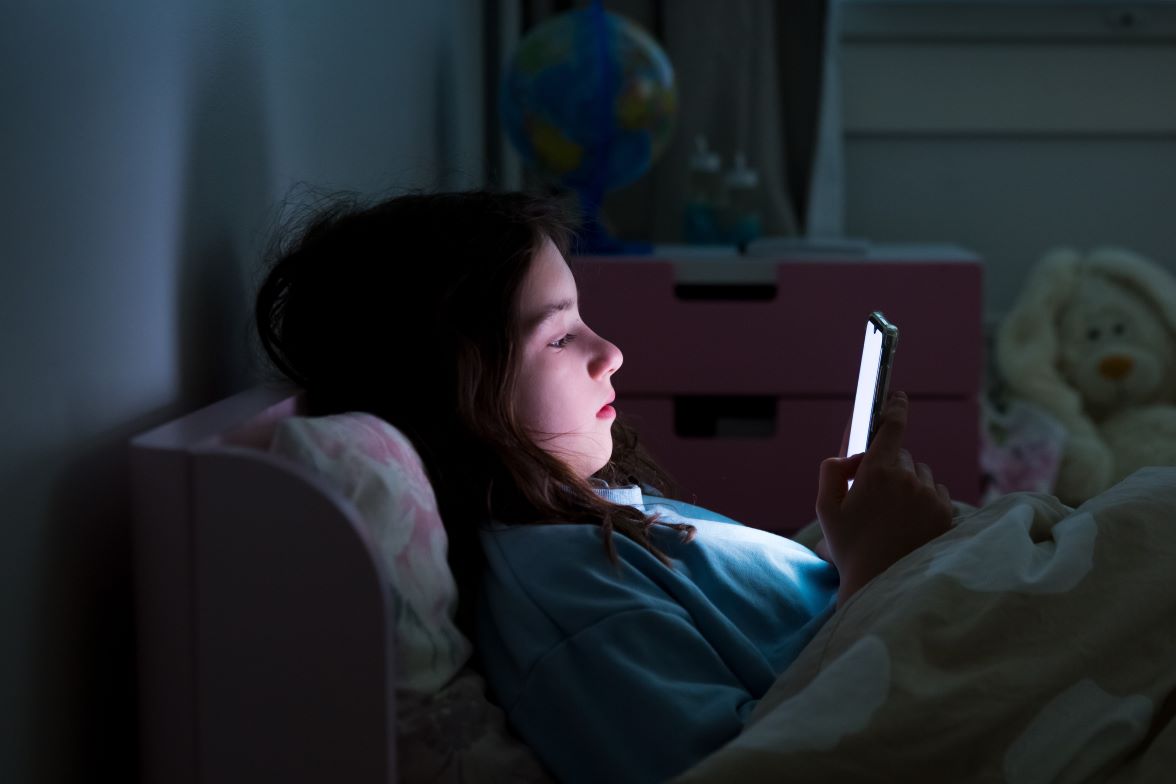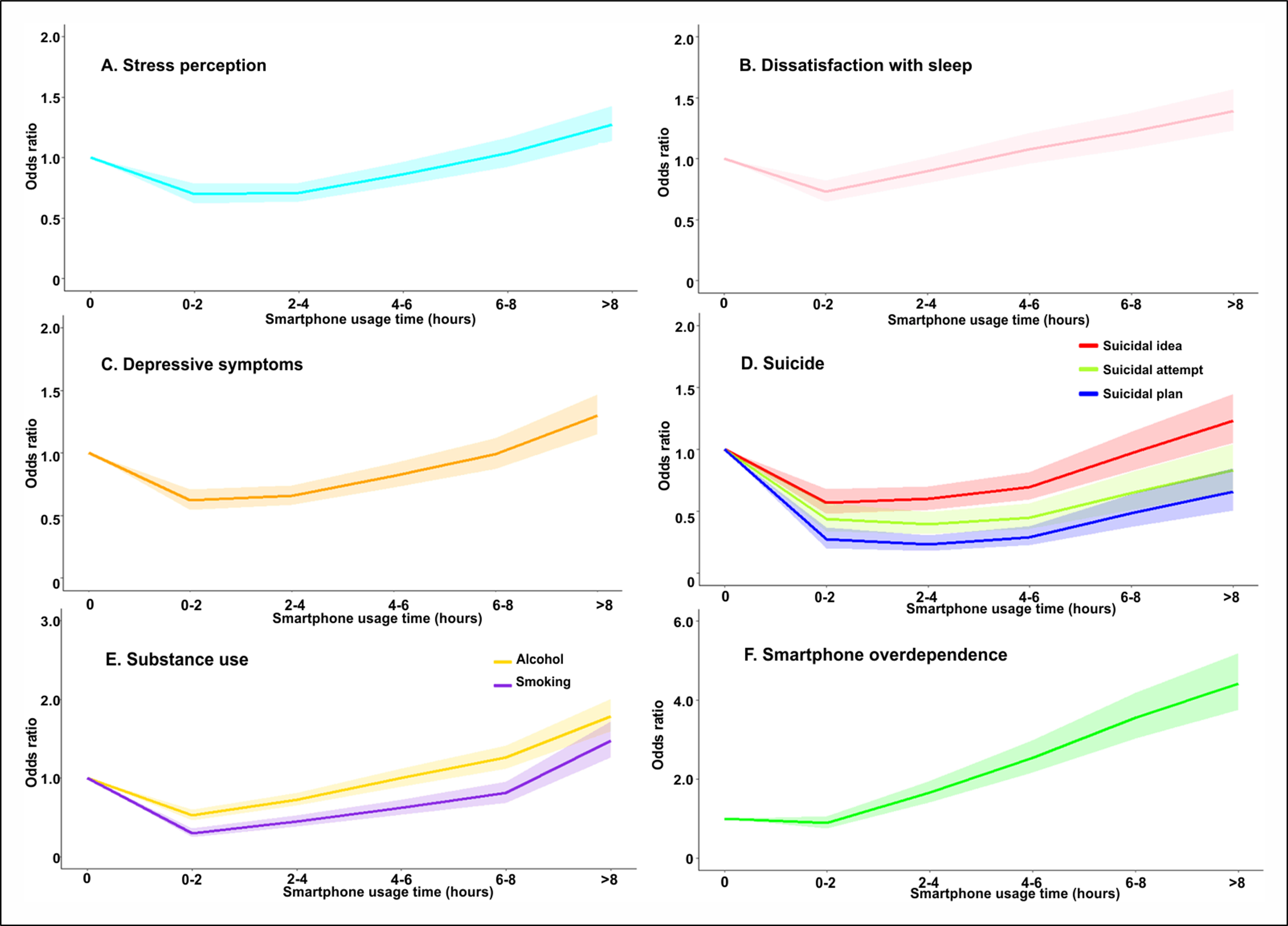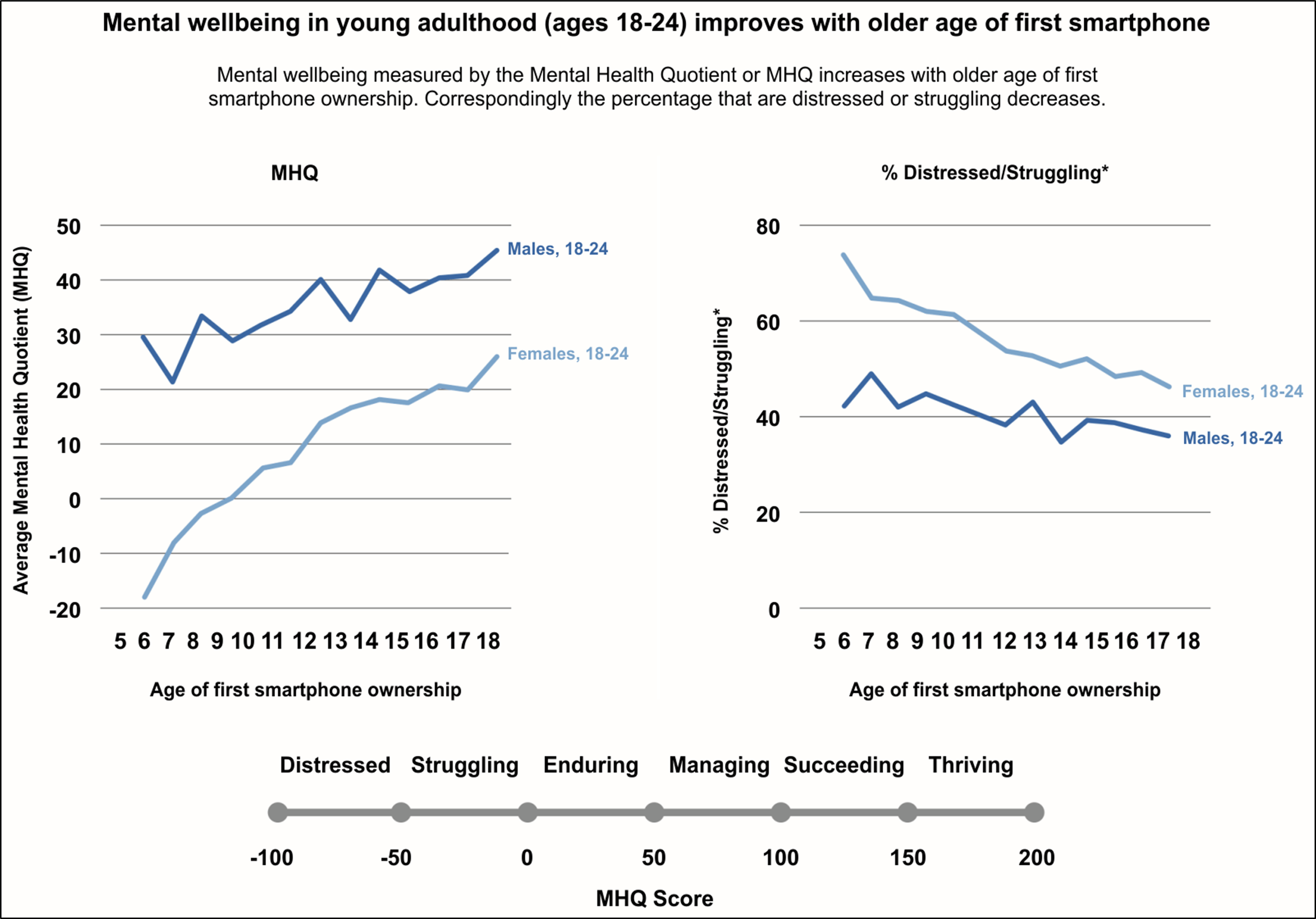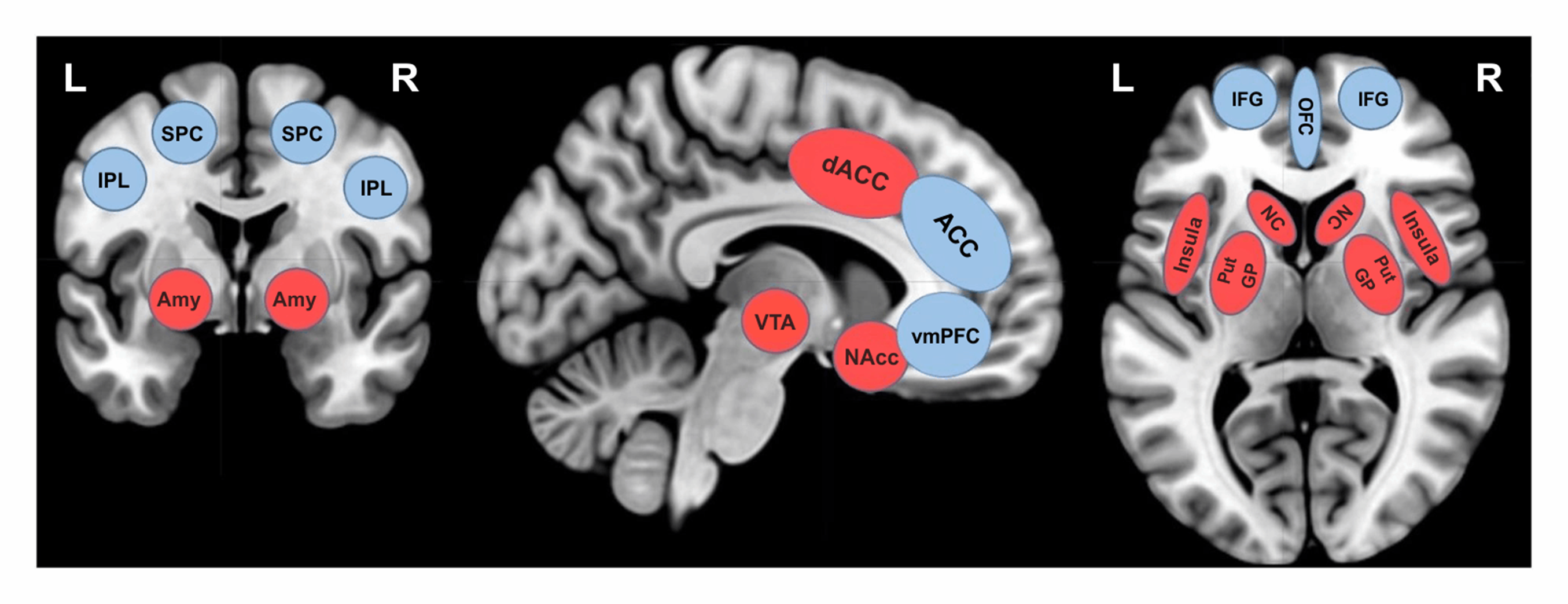
There’s a line that I like to use when I give a speech these days. First I pull out my iPhone and show it to the audience. I call it my ‘dopamine machine’. Then I say:
“The last thing I look at when I go to sleep at night is my smartphone. The first thing I look at when I wake up in the morning is my smartphone.” [pause] “Not my wife. My smartphone.”
It’s a good line and it usually hits the audience effectively, meaning that it packs a punch but in a good-natured, tap-you-on-the-shoulder sort of way. It’s effective because it shows the audience my own vulnerability – my own addiction – but within the familiar confines of a long-term marriage, and it invites the audience to recognize the pathology that most of them share with me, but in a ‘safe’ way.
Recently, though, I’ve been wrestling with both the glibness of my presentation and the easy chuckle of the response. I mean, I’m 59 years-old and I have plenty of functional ‘addictions’, mostly in my relationship with food, but also in my relationship with game-playing, story-telling and the modalities through which these games and stories are presented to me. A smartphone is one of these modalities – a very powerful one – and yes, I am functionally addicted to it, but … you know … get in line.
It’s not that “I can stop anytime I want”, because I really can’t. It’s more that at this stage of my life I’m pretty much playing the hand I’ve been dealt. That’s not being fatalistic and like everyone else I’m making incremental self-improvements wherever I can. But the fact is that I like the central course my life is on and these functional addictions are tangential to that central course, a central course that was formed away from and prior to the mind-warping power of social media and smartphones.
Our children do not have that luxury!
The central course of our children’s lives is absolutely being mind-warped by social media and smartphones, not in some ethereal ghost-in-the-machine sort of way but in an actual neural-wiring sort of way, and this research note by Kiril Sokoloff and the 13D team – How Does Technology Rewire the Intricate Circuitry of the Teenage Mind? – shows how.
I’m pretty angry at myself – someone who has written thousands of words on how media content is intentionally weaponized to drive commercially valuable and politically important engagement, someone who has written thousands of words on how specific stories and grammatical structures have the ability to shape and reshape neural clusters – for talking past the clear and present danger these technologies present to our children’s brains and psyches, for not engaging directly with this issue.
Well, no more. No more glib lines and easy chuckles.
Thank you, Kiril and team, for writing this research note. It’s a wake-up call for me, and I think it will be a wake-up call for lots of us.
Spread the word.
Ben Hunt
Download a PDF copy of How does technology rewire the intricate circuitry of the teenage mind?
I’ve asked my friend Brent Donnelly, who brought this research note by 13D to my attention, to write a brief introduction, too. You can contact Brent at bdonnelly@spectramarkets.com and on Twitter at @donnelly_brent. As with all of our guest contributors, Brent’s post may not represent the views of Epsilon Theory or Second Foundation Partners, and should not be construed as advice to purchase or sell any security.
“Give your kids social media when you want their childhood to end.”
We live in the age of polycrisis. A seemingly endless list of grave challenges has emerged in this new millennium with deaths of despair, political polarization, financial instability, economic bifurcation, global war, an obesity epidemic, rising p(doom) from AI, climate change, and more. Sure, some if this is just “history happening” as Niall Ferguson puts it, but anyone who has lived both the 1990s and the 2020s can plainly see all is not well. While the 1990s were particularly harmonious and happy, the 2020s are particularly dissonant and dark.

The nature of a polycrisis is that there is no panacea.
It is exhausting to read about problems without solutions, but while there is no panacea that solves every issue today, there can be a variety of simple solutions that lead to small, cumulative improvements. Similar to the idea of thinking global and acting local, I try to think big and act small. Here is one simple and powerful action you can take if you have children under 12:
Wait as long as possible before you buy a smartphone for your child, especially if you are raising a girl.
When smartphones first came out, we had a sense they might be dangerous. Now we know. The direct harm from smartphones is well-documented and the evidence for the benefits of giving kids smartphones later is convincing. Any parent who has watched their child stare with eyes glazed at endless hours of streaming TikTok or YouTube shorts can attest to the commonsense notion that this technology is mind-altering. But we don’t need commonsense observation because there is now plenty of science documenting the links between smartphone usage and teen depression, suicide, and substance abuse.
Recently, I read a short, detailed, and well-researched piece from 13D Research & Strategy, one of the leading market and socioeconomic research firms. 13D started in 1983 and I have been consistently blown away by their work. They publish meticulously-researched commentary on markets, society, and global trends.
I want to share 13D’s recent piece “How Does Technology Rewire the Intricate Circuitry of the Teenage Mind?” because I believe the information is critically important for parents and should get as much airtime as possible. Kiril Sokoloff (The Chairman of 13D) has allowed Ben Hunt and I to share it broadly and publicly because 13D keeps a low public profile and as a parent and a strong believer in the negative externalities of smartphones and social media, he would like the information spread more broadly.
Until there are warning labels on smartphones and social media apps that say: “This product increases the risk of teen depression and suicide,” the best we can do is talk loudly about it and then make the best personal choices possible for our families.
I hope you read the piece and I hope it will encourage even just one parent of a young child to make the difficult and courageous decision to ignore their 12-year-old or 14-year-old’s desperate pleas and withhold smartphone ownership privileges a few more years. I hope the current generation is the only one physically and mentally scarred by the negative externalities of social media and premature smartphone ownership as awareness grows that these things are not meant for kids. We didn’t know. But now we know.
You might already have an intuitive feeling that smartphones and social media are harmful to children. This piece from 13D will show you the research that supports that intuition.
Brent Donnelly
Thx to Morgan F. for making the connection
13D Research: How does technology rewire the intricate circuitry of the teenage mind?

As an independent investment research firm, 13D Research studies a wide range of topics that inform and shape both our world and the investment landscape. Finance is not an island, but the manifestation of a vast and complex civilization. We study and write about history, geopolitics, the environment, technology, and a vast array of topics, including neuroscience.
At this juncture in history, we are witnessing a powerful socioeconomic inflection point in how rapid changes to media and communications technology are affecting not only our collective societal discourse and politics but also our individual mental health. The communications revolution of the printing press resulted in the Thirty Years’ War, the complete remaking of Europe, and hundreds of years of witch trials. We are now undergoing a similar revolution in communications technology that could be even more societally disruptive.
This is particularly troubling when it comes to our children, whose brains are still developing. A growing body of research over the years has been showing strong correlations between technologies, such as mobile devices and social media, and a growing collection of psychological pathologies in our children.
The following article is a collection of the latest research from highly credible sources, showing strong correlations between media technology and declining mental health in our children. We are not neuroscience experts, but we have followed neuroscience very closely over the years, and as both parents and global citizens, these developments concern us greatly.
In an era dominated by digital advancements, the impact of smartphones and tablets on the developing brain has become a subject of intense concern. Neuroscience research in this area, still in its early stages, grapples with the uncertain long-term implications of increased technology use among young people. Nonetheless, existing studies have revealed a nuanced interplay between the digital landscape and neurodevelopment—providing insight into the profound ways technology has left its mark on the evolving brains of today’s youth.
We have written at length on how the prevalence of portable technology and the ease of access it provides to social media platforms are associated with heightened levels of teen depression and anxiety. A new study conducted by Seoul’s Hanyang University Medical Center analyzed data on more than 50,000 teens. They found that teens who use their smartphones excessively are 66% more likely to report substance use and 22% more likely to contemplate suicide than their peers.[1]

As demonstrated by the figure below, researchers have identified a direct correlation between smartphone use and worsening mental well-being:

Corroborating this data is research published earlier this year encompassing nearly 28,000 individuals aged 18-24 across 41 countries. The Global Mind Project’s robust study suggests that delaying the introduction of smartphones in a child’s development correlates with better mental health outcomes.[2]

The links between well-being and smartphone use are clear. But what is driving this severe deterioration? Smartphone use is increasingly connected with alterations in the physical structure of teens’ prefrontal cortices—the brain region responsible for executive function over emotion, behavior, and cognition. The heightened neuroplasticity—or the ability of the brain to form and reshape neural connections—during these formative years makes teens even more vulnerable to external influences.
Neuroplasticity is highest during critical developmental windows—including those linked to sensory processing, motor skills, and language systems. These periods, most sensitive in early adolescence, play a pivotal role in shaping cognition.[3] As children interface with technology at increasingly younger ages, it directly impacts their neurocircuitry during critical periods, leaving a lasting impact on the development of their behaviors. Children become more susceptible to anxiety disorders, impaired emotional processing, and neurodevelopmental conditions like ADHD.[4]
Contrary to previously-held beliefs, abundant research has shown that the brain remains plastic throughout life, with the most significant changes occurring until the mid-twenties. This is because the prefrontal cortex takes nearly two decades to fully mature. It is during the gradual development of this brain region that the majority of mental illnesses emerge—at least 50% of disorders are diagnosed by the age of 14, and 75% are identified by 24, according to the UK’s Mental Health Foundation.[5] Yet, as kids start using devices at younger ages, the growth of the prefrontal cortex is impaired, exacerbating difficulties in emotion regulation.
Smartphone addiction is getting worse among younger demographics, but all of us have experienced attachment to a device no matter what age. This stems from the feedback loops that smartphone apps operate on—fueled by dopamine, or the “feel-good” neurotransmitter that powers pleasure systems. Dopamine feeds motivation, learning, and reward centers—prompting the repetition of previously-satisfying activities.[6]
Contributing to the success of smartphone apps is the leveraging of reward prediction error (RPE) encoding.[7] As we interact with a certain stimulus, we learn to associate a reward with a cue—in the case of social media, this takes the form of likes, comments, and shares. RPE is reinforced when unexpected rewards heighten stimulation of dopamine neurons, serving as positive feedback signals. If the anticipated reward is not received (e.g. no notifications), dopamine activity decreases and is linked to depressive symptoms.
When rewards (e.g. notifications) are delivered randomly and checking for them has minimal cost, the habit of frequent-phone monitoring develops. The benefit of a dopamine spike from an alert far exceeds the time cost of checking your device. For example, Instagram’s algorithm uses a variable-ratio reward schedule in which notifications are not displayed in their real-time. Instead, they are spaced out so that users receive them in bursts. The initial disappointment surrounding content that acquires fewer likes is soon followed by a surge in positive feedback.[8]
Studies most notably conducted at Harvard and Stanford have demonstrated that social media and messaging notifications are equally—if not more—effective at eliciting dopamine production as real-world interactions.[9] The effortless replacement of real connections with virtual ones even concerns Chamath Palihapitiya, former Vice President of User Growth at Facebook. At a 2018 lecture at Stanford Graduate School of Business, Palihapitiya remarked, “I feel tremendous guilt… The short-term, dopamine-driven feedback loops that we created are destroying how society works.” [10] Essentially, the always-accessible social world that smartphones offer is chipping away at our humanity.
If one alert spikes dopamine, many alerts must lead to greater satisfaction—at least, this is the logic behind the emerging trend of “media multitasking” (MMT) or using several media sources at once. A recent Kaiser Family Foundation study reveals that in 2022, kids and teens engaged with virtual media for an average of 7 hours and 38 minutes per day. But because of media multitasking, this figure is more accurately represented as 10 hours and 45 minutes of screen time daily.[11]
In a 2017 Pediatrics study, Chief of Research and Development for the Advanced Education Research and Development Fund, Dr. Melina Uncapher, expresses her concerns over extensive multimedia use: “29% of [teen phone use] is spent juggling multiple media streams simultaneously. Given that a large number of MMTs are children and young adults whose brains are still developing, there is great urgency to understand the neurocognitive profiles of MMTs.”[12]
Teens think that they can watch TikTok while completing math homework. But genuine multitasking is more a myth than a reality. A 2009 Stanford study, “Cognitive control in media multitasksers” found that humans cannot effectvely multitask. In fact, cognitive neuroscientist Dr. David Strayer states that 97.5% of the population cannot truly multitask—and attempting to do so only generates stress. Human brains are not equipped to handle numerous tasks simultaneously, but smartphones constantly require us to do so.[13]
Every time we shift our focus to a new notification, we interrupt a previous task. This transition is associated with a “switch cost,”[14] which may only cost a few seconds of time. However, when we are constantly bombarded with new alerts, this adds up. Cognition and perception expert, Dr. David Meyer, has stated that shift costs can use up to 40% of brain time every day, drastically reducing productivity and focus. [15]
Switch costs subconsciously trigger the stress-hormone, cortisol—and the best antidote for this anxiety is a dopamine spike resulting from engaging with the notification that caused the distraction in the first place. In this way, many of us are trapped in a vicious cycle in which the cause of our stress is also the remedy for it.
Exposed to chronic stress, the prefrontal cortex is weakened and can no longer manage the emotion centers in the brain. This is bad enough for adults but is even more detrimental for teens whose prefrontal cortices are not mature until their twenties. Teen brains are overwhelmed by the loop of cortisol followed by dopamine which exhausts the prefrontal cortex, and results in increased irritability, emotional volatility, and difficulty concentrating.[16]
Underlying the worsening emotional symptoms from phone use are the associated chemical irregularities. Neuroimaging studies provide valuable insights into these changes. The figure below is from a 2021 study, “The Developing Brain in the Digital Era,” and depicts the disproportionate presence and competition between reward systems (red circles) and control systems (blue circles). A healthy brain would have an approximate balance between reward and control.[17] But in this image of a teen MMT’s brain, we see that reward systems have higher activation compared to control mechanisms.

Using new imaging techniques like this, researchers can visualize the imbalances that result from profound smartphone use. A groundbreaking 2017 study conducted by the Radiological Society of North America found that smartphone addiction disrupts levels of GABA, an inhibitory neurotransmitter implicated in regulating anxiety. Errors in GABA[19] production make it harder to control anxiety symptoms, manifesting in more stress, fear, and restlessness.
Moreover, a 2020 paper published in Frontiers in Human Neuroscience discusses the biochemical mechanisms that promote digital dependence among young people. Using MRI analysis, researchers found that nodes in the mesolimbic network (associated with sleep disruptions, depression, and fear) are overactivated in teens who use smartphones more frequently.[20] The manifestations of this disruption were far more extensive in girls than boys.
As the Narrative of technology’s influence on the neurocircuitry of the adolescent brain continues to unfold, one wonders when parents will wake up and put a stop to it.

Download a PDF copy of How does technology rewire the intricate circuitry of the teenage mind?
Endnotes
[1] From the article, “Teens who use phones excessively are more likely to consider suicide: study” published in The Messenger: https://themessenger.com/health/teens-excessive-phone-use-mental-health-study
Cross-referenced with the PLOS One publication from December 6, 2023 publication, “Association between smartphone usage and health outcomes of adolescents” by Jong Ho Cha, Young-Jin Choi, Soorack Ryu, and Jin-Hwa Moon.
[2] This statistic and figure are from The Global Mind Project (with Sapien Labs) report which was cross-referenced here: https://sapienlabs.org/wp-content/uploads/2023/05/Sapien-Labs-Age-of-First-Smartphone-and-Mental-Wellbeing-Outcomes.pdf?
[3] Neuroplasticity is a well-accepted phenomenon even through popular psychology in the general public. Understanding neuroplasticity and its sensitive periods cannot be isolated to a singular, or even a few paradigmatic studies. It is the accumulation of decades of research.
[4] ADD/ADHD, see this webinar about how screen time impacts development conducted by Dr. David Anderson, Senior Director of the ADHD and Behavior Disorders Center and the Senior Director of National Programs and Outreach at the Child Mind Institute: https://www.additudemag.com/webinar/screen-time-adhd-brain/
2) See the paper, “The Use of Social Media in Children and Adolescents: Scoping Review on the Potential Risks” https://www.ncbi.nlm.nih.gov/pmc/articles/PMC9407706/
3) See the paper “Excessive Smartphone Use Is Associated With Health Problems in Adolescents and Young Adults”https://www.ncbi.nlm.nih.gov/pmc/articles/PMC8204720/
[5] Direct link to The Mental Health Foundation’s page, “Children and young people statistics:” https://www.mentalhealth.org.uk/explore-mental-health/statistics/children-young-people-statistics
This stat comes from and is cross-referenced with this paper: Kessler RC, Berglund P, Demler O, Jin R, Merikangas KR, Walters EE. (2005). Lifetime Prevalence and Age-of-Onset Distributions of DSM-IV Disorders in the National Comorbidity Survey Replication. Archives of General Psychiatry, 62 (6) pp. 593-602. doi:10.1001/archpsyc.62.6.593.
[6] Dopamine and its systems are well-known. Research on its function and activation is incredibly widespread.
[7] RPE encoding is a well-accepted and explored phenomenon in the neuroscience community.
It was first suggested by Schultz et al. in 1997. Citation below:
Schultz W, Dayan P, Montague PR: A Neural Substrate of Prediction and Reward. Science 1997, 275: 1593-1599.
[8] From an article published by Harvard University Graduate School of Arts and Sciences, originating from a 60 Minutes Interview with a former Google product manager. Watch it here: https://www.cbsnews.com/news/brain-hacking-tech-insiders-60-minutes/.
[9] Stanford University: Stanford Medicals’ psychiatrist Dr. Anna Lembke is a frontrunner in the field of dopamine research as it relates to smartphone use. See her book, Dopamine Nation: https://scopeblog.stanford.edu/2021/10/29/addictive-potential-of-social-media-explained/
Harvard: https://sitn.hms.harvard.edu/flash/2018/dopamine-smartphones-battle-time and https://hms.harvard.edu/news/screen-time-brain
Harvard Health Publishing from Harvard Medical School: https://www.health.harvard.edu/staying-healthy/staying-focused-in-the-era-of-digital-distractions
[10] Find Palihapitiya’s talk here: https://www.youtube.com/watch?v=PMotykw0SIk
[11] From a Kaiser Family Foundation Report that can be accessed here: https://www.kff.org/wp-content/uploads/2013/01/8010.pdf
[12] This quote is form the paper, “Media multitasking and Cognitive, Psychological, Neural, and Learning Differences” and can be accessed here: https://pubmed.ncbi.nlm.nih.gov/29093034/
[13] This study was conducted by Stanford’s Communication Between Humans and Interactive Media Lab and was published in the Aug 24, 2009 edition of the Proceedings of the National Academy of Sciences.
Stanford’s study on PNAS: https://www.pnas.org/doi/abs/10.1073/pnas.0903620106
Dr. Strayer’s statistic: https://the1thing.com/lie-2-multitasking-increases-productivity/
A review can be found here: https://news.stanford.edu/2009/08/24/multitask-research-study-082409/
Here is the study referenced in a Business Insider article: https://www.businessinsider.com/what-your-smartphone-is-doing-to-your-brain-and-it-isnt-good-2018-3
[14] “Switch cost” is a technical term but more information on it can be found here: https://www.apa.org/topics/research/multitasking
[15] This is from a Business Insider piece with psychologist David Meyer who proposed this statistic: https://www.businessinsider.com/what-your-smartphone-is-doing-to-your-brain-and-it-isnt-good-2018-3
[16] This is very well-established but see:
1. “Excessive Smartphone Use is associated with health problems in adolescents and young adults” published in Frontiers in Psychiatry https://www.ncbi.nlm.nih.gov/pmc/articles/PMC8204720/2.
2. “Role of frontostriatal connectivity in adolescents with excessive smartphone use” published in Frontiers in Psychiatry https://www.ncbi.nlm.nih.gov/pmc/articles/PMC6143708/
3. 2018 Scientific American article, “Are Smartphones Really Destroying the Lives of Teenagers”https://www.scientificamerican.com/article/are-smartphones-really-destroying-the-lives-of-teenagers/
[17] See the 2017 paper published in the peer-reviewed journal, Social Cognitive and Affective Neuroscience, “A balance of activity in brain control and reward systems predicts self-regulatory outcomes”
https://www.ncbi.nlm.nih.gov/pmc/articles/PMC5460048/#:~:text=A%20recent%20theory%20suggests%20that,Heatherton%20and%20Wagner%2C%202011
This was also well-established by a 2011 Heatherton and Wagner study that proposed a theory in which “the neural basis of self-control involves a balance between automatic processes that represent rewarding qualities of stimuli and controlled activity in prefrontal cortex that regulates this bottom-up activity”
[18] This image and the statistic is directly from the referenced 2021 study, “The Developing Brain in the Digital Era.” https://www.frontiersin.org/articles/10.3389/fpsyg.2021.671817/full
The authors directly state:
“Results highlight three important key messages: (i) a frequent and longer duration of screen-based media consumption (including Internet-related addictive behaviors) is related to a less efficient cognitive control system in adolescence, including areas of the Default Mode Network and the Central Executive Network; (ii) online activities act as strong rewards to the brain and repeated screen time augments the tendency to seek short-term gratifications; and (iii) neuroscientific research on the correlates between screen time and adolescent brain development is still at the beginning and in urgent need for further evidence, especially on the underlying causality mechanisms.”
[19] https://www.ncbi.nlm.nih.gov/pmc/articles/PMC7357649/
[20] https://www.ncbi.nlm.nih.gov/pmc/articles/PMC7577047/










I have some skepticism around this discussion. I’m skeptical of my own skepticism also since maybe it is just cope. But the uses of narrative are very clear to me which doesn’t help (i.e. persuasively scary language, focus on correlations without considering potentially causative alternatives, etc). I would like to spend time digging deeper into the data.
My first layer of skepticism is generational. I’ve found the narrative here to be widely acceptable to old people…I can just picture the nodding of the balding heads (I count myself here fwiw)! But what do young people think?? I suspect we’d have to be on tiktok to have a breadth of experience to answer that question, and are any of us? Of course a huge social change looks suspicious and disruptive to old people! As it ever was.
My second layer of skepticism is that the decaying nature of our institutions has become very much increasingly obvious on the exact same time scale as the correlations being looked at in this discussion. Obviously a chicken and egg situation (the technology may be contributing to the macro decay). I was thinking of Ben’s other post this week on the Pravda and Izvestia. Would it be surprising that the amount of time a Russian teenager spent reading those newspapers during the collapse of the soviet union would lead to a correlative effect on suicide rates? I don’t think that seems surprising. This is tough because it points the finger back at the generational argument; these same nodding balding heads have a tougher time taking responsibility for the macro situation.
I think the real value here is contained in Brent’s intro: this is “history happening”, plus sage and realistic suggestion to simply be more careful with your children than perhaps you might otherwise be.
I will say one more thing for my kids: unless I fail they will have been innoculated with VASTLY more narrative resistance than I ever had by me commonly passing along (largely to their annoyance) what I’ve learned here at ET and adjacent ideas.
That report confirms what I have instinctually believed about social media for years.
Now throw cannabis use in on top of that. There are some damning studies out there about the effects of cannabis use on a developing mind, they ring very true as well, as I smoked a lot of pot in my teenage years. Combine the two and its little wonder we have young people that are killing others and themselves at record rates.
“As the Narrative of technology’s influence on the neurocircuitry of the adolescent brain continues to unfold, one wonders when parents will wake up and put a stop to it.”
Last Saturday, my wife and I were at my mom’s house with our 7 year old nephew and 4 year old niece. We were all in the living room, talking, playing and watching the tv. Sitting next to me, my nephew was entranced by his Youtube show. Not without the fear of rejection, I picked up the Magic Treehouse book sitting on the ottoman in front of us and asked my nephew if he wanted to read it with me. To my delight, he accepted!
After reading a chapter, he and his sister were ready to watch a movie on Netflix and I was on my way to our local bookstore. Within an hour I was walking through my mom’s front door with a stack of children’s books. I laid them all out on the ottoman and took my seat on the couch.
The books were not acknowledged…until they were.
It took a while (30 min?) for my nephew’s attention to shift from the tv to the display of books his uncle just brought home, but once it happened, I was quick to ask him if he wanted to read. Again, he accepted my invitation and we ended up having a great time reading Percy Jackson, the Lightning Thief.
As of now, we’ve got a date for the kids to come over tomorrow (Saturday) afternoon to read aloud together. My wife and I are going to try and make it as fun as possible; not sure what that will entail, but food and a trip to the park may be included!
My point is to share a practical way I’m attempting to help the big societal situation by addressing my personal situation. I’ve felt sad and angry for years now about how screen-addiction is hurting people, both young and old- definitely including myself. I’ve also felt, much of the time, overwhelmed, helpless and depressed- concerning both our societal and my personal screen-addiction.
I don’t share this without fear and doubt. I’m hyper-aware that however well intentioned I am, it’s very possible plans will fall through, as they do. I know how the busyness of my own life can sabotage my plans to do good. And I’m also very aware of just how powerful the pull of screens can be, in the end. My hope, though, is that this small act of faith for our nephew (and our niece) makes a positive impact on him and through him. And, I have a feeling that this small act of faith to reach a helping hand out to someone I love will have a reciprocal impact on me as well- encouraging me to keep fighting the good fight against screen addiction, while fighting for a brain that is wired to love stories, real connection to humans, and the ability to focus.
Thanks to you, Brent and Ben, for sharing 13D’s very important work which has, this morning, created a sense of synchronicity for me. Here’s to full hearts, small acts of faith, and the miracle of neuroplasticity.
Joey
As someone married to an English teacher who is also a borderline Zoomer/Millennial (I’ve seen multiple cutoff years and don’t know which to trust) I have a window into this whole mess.
Mrs. Yuppie’s day one lesson is, I swear to God, nouns and verbs. These are 9th and 10th graders. This is at a private school. She teaches honors as well as regular classes. They’re all similar in their abilities, though the honors kids will usually work harder if they get stuck.
Kids do not read at anywhere near the level of proficiency that they did even a decade ago. She knows this because a decade ago she was in 10th grade. Lack of comprehension is the number one problem. They’ll read a story and just…not understand what happened. We’re not talking Finnegan’s Wake here. They struggle with a variety of subjects, from Greek Mythology to The Great Gatsby.
She uses a tool called No Red Ink. It is impossible to get a poor grade with this program so long as you keep trying to get the right answer. Students still fail these assignment, which are meant to be a gimmie. The tool itself exists to establish depth of knowledge in an effort at mastery rather than hitting a certain score. How many attempts did it take for a student to get the correct answer? First try across the board? Great, the student has mastered that subject. 14 attempts before they gave up? Hooboy.
“How does any of this relate to phones and social media?” you ask.
While phones are not allowed to be out during class, if things wrap up a few minutes before the bell the kids are allowed to pack up their things and socialize. They do not do the latter. They ALL pull out their phones and start scrolling to see what they missed while class so rudely interrupted their social media driven existence.
They do not talk to each other. They will text each other, and often to my wife’s amusement they’ll text someone who is in the room with them. The level of introversion is halting. The only kids who seem well adjusted are—preposterously—the theater kids. They all seem to be much closer to how high schoolers used to act, at least in terms of how they interact with each other and the world. But for the most part the old paradigm has been shattered and replaced by some TikTok mediated Borg.
I acknowledge that the plural of anecdote is not data, but what I’ve seen and what I’ve been told is enough to justify my relatively strict rules for my own child when it comes to technology.
The entrance exam scores at the Catholic high school I went to have been steadily falling for years, but they really plummeted in the years since the pandemic.
A relative who teaches there said last years were the lowest ever!
i’m not a doc nor scientist but i am a parent.
My kids had phones, ipods (yeah), xboxs, playstation versions x-z…And we tried to keep a balance with it all between school, sports, reading, chores, etc. I was careful to set a soft limit on the video games and it worked - my kids played and used the tools but would easily drop them for something else.
A lot of their friends could not. I actually had kids that snuck into our house to use our playstation (unknowing to me or the the kids parents)…to my kids, their friends just wanted to use the system - no big deal. Unfortunately these kids were already hurt.
The eye/mind are designed to receive and interpret electrical impulses, i.e. light/images. These games and, now phones and their content, pack a lot of punch. All they care about is that you continue to play, continue to watch - eyeballs mean $. That is the end game of the SM/Vid gaming cos.
I do have friends who’s kids were pulled out of highschool or college due to cognitive entropy (i don’t know how else to describe it) from video game addiction - they could not focus on really anything other than the game and they would play for hours and crash hard till they could play again. No different than heroin, i suppose. One of the kids was put into a controlled isolation to regain, rebuild his mind/balance - it took 18 months.
When i was a kid in 70s/80s the storyline was that weed was the gateway to hard drugs. The repeated warnings started in 6th grade…maybe 7th. And the messaging got stronger thru 10th grade. Personally, i didn’t put a lot of stock into that narrative, but i was aware of the messaging - some of my friends gulped the message and stayed clear of anyone rumored to be weed friendly.
My point here is there is no education or even awareness (that i’ve seen) around these tools, apps etc to warn parents/kids that X use could lead to Y problems, as described in the article. None - and I believe that is by design.
Shifting gears a bit…I was moving snow today in my kubota and heard a blurb on NPR discussing another existential threat to our democracy from AI. Funny how often existential, threat and democracy are words used together today (Camus must be rolling in his grave).
For some reason i thought, why doesn’t anyone discuss opiod addiction as an existential threat (not just to democracy), what about what this article discusses - sure sounds like these tools are an Existential Threat to minds and soundness being!
Economics.
There isn’t a centrally perceived “economic” threat.
Keynesian macroeconomics has a fiat denomination, method of account, that does not rely on the output of the majority as a world class, skilled workforce. Similar to the central credit-money supply, the employment quantity numbers lack externally verifiable quality of labour parameters.
The bedrock of hard capitalism’s shift into pure political creditism needs only the ignorance, distraction, and ideological perversion of the owners of a nation’s currency. The Nation.
The fullfed fingers of The Global Wholesale Pickpockets’ Association yearn big pockets to pick.
This isn’t an anti-global trade position. My Kubota needs the satellites to precision farm.
Over the last 25 years at a small. independent high school, I have seen the same. Stimulating and generating class discussions is the MOST onerous challenge faced in the classroom. DEI has laced a labyrinth of tripwires across the humanities and social sciences, and most students understand the game well enough, or have previously been burned, that they simply refrain from, and avoid engaging in discussions. Most prefer to simply complete assignments… in the hopes that they can have some free time and get back online. Where they will find an abundance of rrrrrracism, sexism, bigotry, climate denialism and poly-crisis catastrophizing, paradoxically validating their reticence.
There is a silver lining in all of this. Once upon a time, the position of Substitue Teacher, colloquially, “the Sub,” was a hazardous and harrowing occupation. Churlish and impudent adolescents embraced opportunities to misdirect and foment some measure of chaos in the Sub supervised classroom. But it is light work now. Take attendance and direct students to their online assignments, and then let them use their phones. Angels.
“make, protect, teach” This is inspiring stuff brother. Onward.
Not to veer too far off topic, but this hints at something that’s been lurking beneath the surface for years and only popped up in 2016. For a long time the more moderate elements of the Right have extolled the virtues of immigration and globalization—both of which have many advantages!—while trying to sidestep the reality that tradeoffs exist. Lots of politicians (now retired, either by their choice or that of voters) didn’t want to get into the details of who loses when big changes are made in society.
I see social media in much the same way, now that I think about it. There are a lot of benefits to having such a connected world. But nobody stopped to ponder the tradeoffs that we’d be making and now those unspoken downsides have shown up and are demanding our attention. At least in this one narrow instance we’re actually talking at a society-wide level about what we’re giving in exchange for this new world.